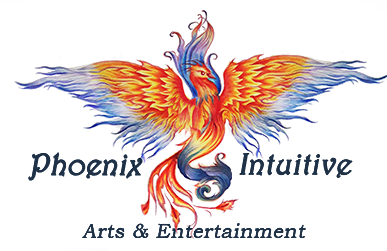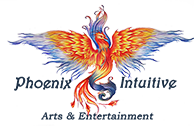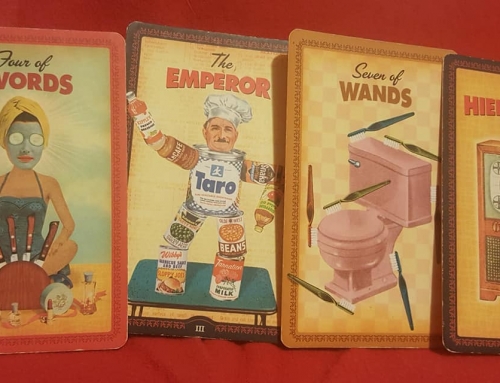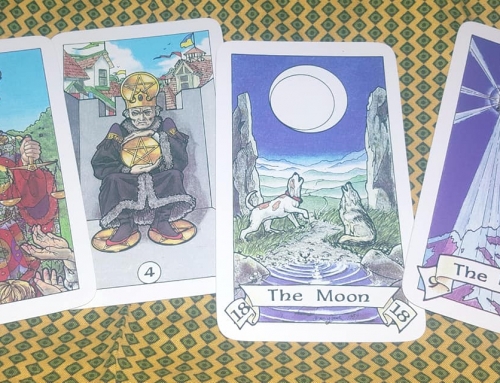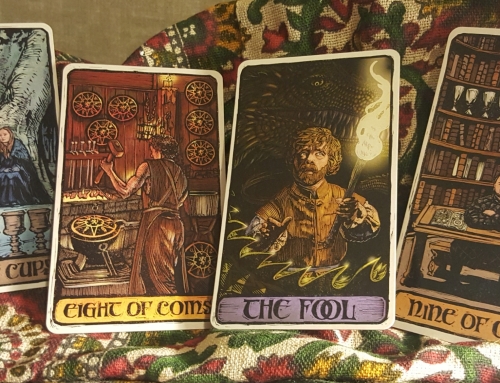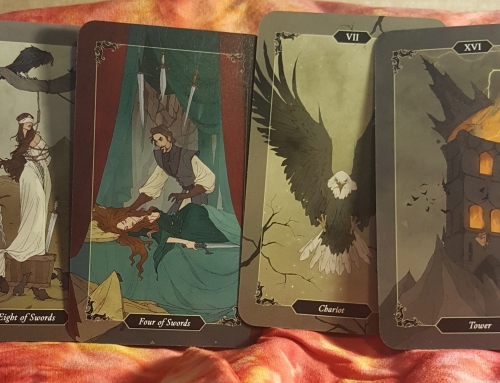When I started reading the tarot, I was 15. I was already a weird kid, with a fascination of paranormal things. If there was a book about local legends, and UFO’s, I was probably reading it. It may come as no surprise that when my father bought his deck of cards, the Mythic Tarot, I commandeered them. I used the book, like a lot of new readers, and continued to remain self-taught for many years. I did not grow up in the age of internet access and lived in a relatively small town. Resources to gain a deeper understanding of the cards were scarce.
Thirty plus years later, I am seeing a growing trend in teenagers and young adults gravitating to tarot and oracle cards, as well as older generations using cards to find their way to spiritual and personal expansion. For many it is a novelty, and others are exceptionally talented readers and intuitives who have taken on serious study. We are in the age of information, where books, articles and classes are now at our fingertips, yet that inner 15-year-old still wishes she had someone to talk to about this amazing tool she had discovered, she being me.
There were things that I wish I had known, and they are questions that am I still asked. Here are some of those tips and pieces of information to help get you started at any age.
You can buy your own Tarot decks, especially your first
There is a myth that your first deck must be a gift. A tarot deck, I feel, is very personal. When I see a deck that speaks to me, I have a visceral reaction. There is almost a rush of excitement when I see a new deck that I know must be mine. Unless a loved one happens to know what I want, and is wonderful enough to purchase it for me, I would much prefer to purchase it myself.
Picking out a tarot deck can be overwhelming, if for no other reason, that there are so many. There are tarot cards representing light and whimsical themes, to dark and scary, and everything in between. Take your time choosing. You can find cards at your local shops, and online, but you can find pictures and information on the web at links you will find here. You will find the right deck, or collection of decks in due time.

The Modern Witch Tarot
You don’t have to spend a lot of money
There are decks, such as Smith-Waite, or Rider Waite that are reasonably priced, but then if buying is not an option, you can use playing cards. The different between the symbols we find in modern tarot, and a regular playing deck is only in the symbols. One is Latin; cups, swords, rods, and coins, while the other is French; heart, spades, clubs, and diamonds. For a couple of dollars, you can write keywords on the cards, and keep a notebook of interpretations. Also, there are pdf files that can be downloaded and printed from the internet. The cost is paper, ink, and the time it takes to cut them into separate cards.
Get to know your deck
Each deck has a personality by way of the images, and what the creator is attempting to convey. While I am a fan of personal interpretation of the cards, I think it’s good to at least understand what the author/artist had in mind. Aside from that, take in the details of each card: colors, symbols, people, clothing, background, plants, animals… all of it. Let the cards tell you a story. You will be surprised as to how much information you can get out of one tarot card.
There is no one way to read the cards
The tarot is not a “one size fits all” system of divination. Just like people learn and respond to stimulus in different ways, we respond to symbolism in different ways. There are those who take time to memorize the systems of symbols, committing each card interpretation to memory. Some are far more accurate trusting their intuition and perceptions of the cards on sight. Then there are those who exist between these two worlds, acknowledging traditional interpretation while trusting their own intuitive instincts. As you continue to learn and practice, you will find your comfort zone.
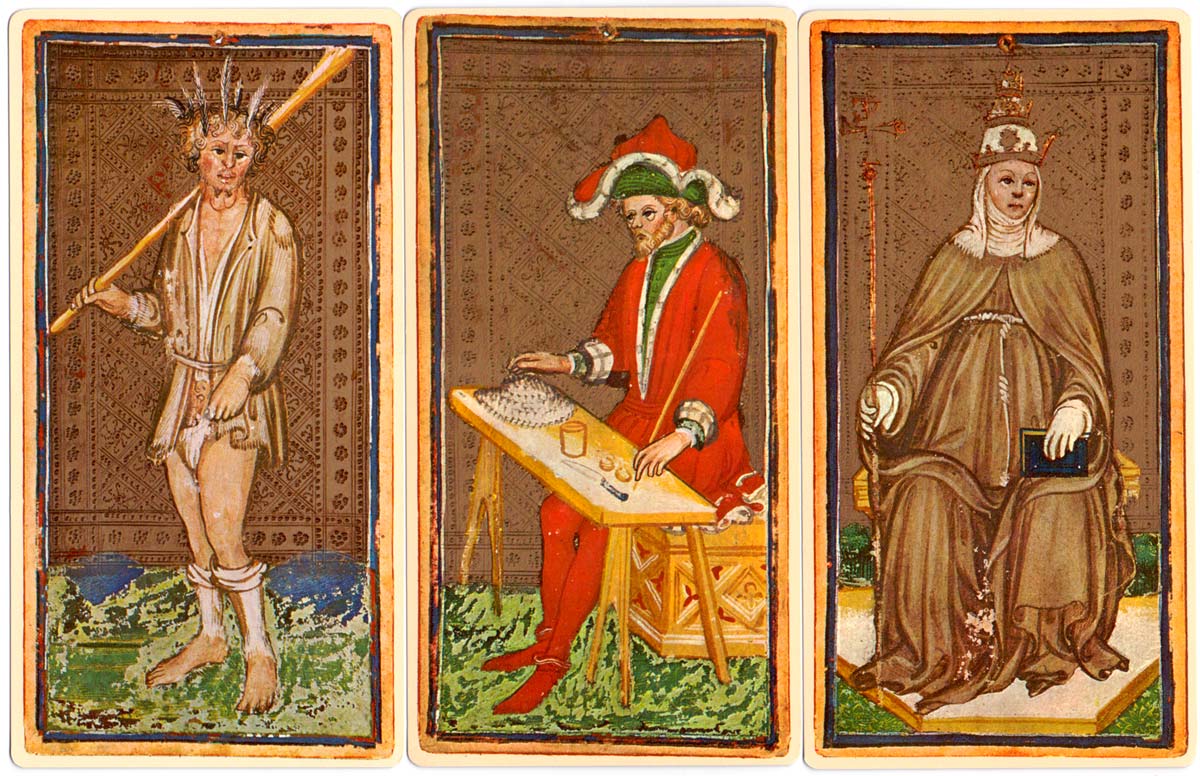
The Visconti Sforza Deck, c. 1460
Tarot cards have an interesting history
I am an aspiring tarot history geek. Tarot cards have an interesting past involving Italian aristocracy during the 15th century. They loved games of chance, so commissioned cards for a game called tarocchi. It is these ornate pieces of art that evolved into modern day tarot. The images were allegorical, or intended to tell a story to the players, reflecting social order and status. Over time, the cards started to be used as a divination tool called cartomancy. History lessons may not be everyone’s jam, but it has helped improve my tarot reading ability tremendously. There are sources online, but Sheryl E. Smith’s website, Tarot Heritage, is well researched, and has a number of references. There is also a group on Facebook where you can stay in the conversation, and receive all sorts of information.
Practice makes perfect
There are a number of resources online, and a ton of books. Mary K. Greer and Rachel Pollack are among some of the best authors, but only begin a long list of talented and knowledgeable tarot experts. Go ahead and read all the things. It is helpful to see different perspectives and thoughts on the subject, but consider that it is how the principles and ideas are utilized that count. There are numerous ways to practice, but my top three ways for gaining experience are:
- Do reflection readings for yourself. Keep a journal that notes your impressions, feelings, and ideas when looking at the cards. Do not censor yourself. What you record can be valuable in how you relate to the cards and read for others in the future. Side note: I am not suggesting that you read for yourself, but choosing cards to reflect on, like one might stare at candle or idol while meditating.
- There are tarot meetups and salons where people come together to explore different tarot subjects, and trade readings. Hearing and sharing different perspectives can be useful and even powerful. I host meetings several times a month that you can find here.
- Read for friends and strangers. Some of the best experience I ever had was reading for people in the laundry mat while waiting on clothes to dry.
Finally
Ask questions. Trust your instincts. Remember that this is as much of a game as it is an esoteric tool giving us the freedom to intuit changes in people’s lives, tell a story, manifest our world, and deepen our connection to self. There are no hard-fast rules, and I cannot impress upon tarot enthusiasts new and old, that it is your relationship to the cards that counts. Tarot is an invitation to have fun, manifest, and explore!
Links to Tarot Deck Resources
http://www.aeclectic.net/tarot/
http://tarotgarden.com/shop-all/
https://www.etsy.com/market/tarot_cards
https://tarot-heritage.com/history-4/the-rider-waite-smith-deck/
The Modern Witch Tarot
https://www.lisasterle.com/mwt
The Halloween Tarot
https://www.usgamesinc.com/Halloween-Tarot.html
The Cat Tarot
https://meganlynnkott.com/products/cat-tarot
The Nightmare Before Christmas Deck
The Wizard’s Tarot
https://www.etsy.com/listing/787283350/super-rare-wizards-tarot-deck-297-page
The Mythic Tarot
http://www.aeclectic.net/tarot/cards/mythic/
The Manga Tarot
https://www.etsy.com/market/manga_tarot_cards
Free Printable Cards
https://www.darktarot.com/printable_tarot_deck/
https://www.beeskneesindustries.com/blogs/news/printable-miniature-tarot-cards
